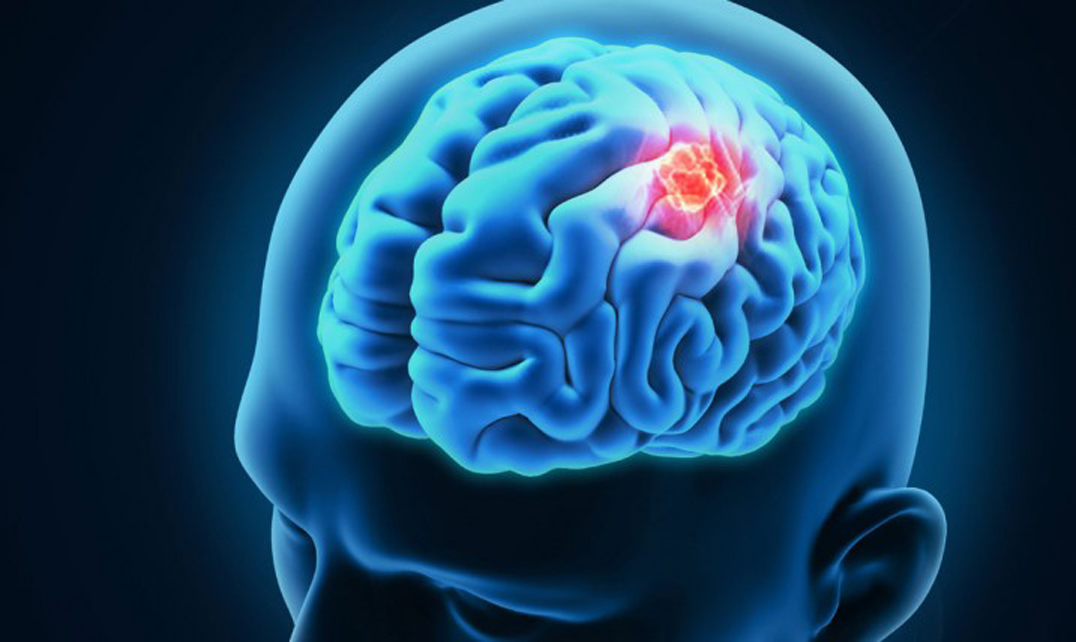The World Brain Tumour Day is observed on 8th of June, every year since 2000. The National Health Portal, (NHP, India) states that more than 500 new cases are diagnosed with brain tumour everyday worldwide. But, how many of us know about Brain Cancer? In compliance with a study on childhood cancer, a brain tumour is common in girls and in both sexes in adults. This page will give you a glimpse of Brain Cancer causes, stages, types, treatment, symptoms etc and how helpful is health insurance
What is Brain Cancer?
Brain cancer basically develops from the cells within the brain. The brain is an important and the largest part of the central nervous system (CNS) and is the control center for vital functions of the body. It will control the movement, speech, thoughts, feeling, memory, hearing, vision etc.
A Brian tumour is classified by the type of cell or a tissue the tumour effects, and the location and grade of a tumour. The tumour cells may travel short distances with the brain, but not outside the brain. It is when cancer develops in the other parts of the body and spreads (metastasizes) to the brain, it is called a secondary brain tumour or metastatic brain cancer.
Generally, many growths in the brain are popularly called as brain tumours, but not all are cancerous. However, a malignant tumour comprises of cancer cells. The term cancer is reserved for malignant tumours and is composed of aggressively growing, abnormal-appearing cells referred to as cancer cells.
What are the causes of Brain Cancer?
Basically, brain tumours begin in the brain itself or in the tissues which are close to it like the membranes, cranial nerves, pituitary gland etc. Predominant brain tumours begin when normal cells acquire mutations in their DNA. These allow the cells to grow and divide at increased rates and continue living when healthy cells would die. This results in a mass of abnormal cells, which form tumours.
Also, there are some inherited conditions like such as Von Hippel–Lindau disease, multiple endocrine neoplasia, and neurofibromatosis type 2 carry a high risk for the development of brain tumours. However, studies have not shown any connection between cell / mobile phone radiation. But the WHO has classified mobile phone radiation on the IARC (International Agency for Research on Cancer) scale into Group 2B – possibly carcinogenic. The current cell phone usage may cause brain cancer, the 3G (third generation) phones emit on an average 1% of the energy emitted by the GSM.
Pathophysiology
Tumours of the brain produce neurologic manifestations through a number of mechanisms. Little, critically tumours may damage specific neural pathways crossing the brain. The tumours can invade, infiltrate, or supplant normal parenchymal tissue, disturbing normal function. Since it dwells in the limited volume of the cranial vault, growth of intracranial tumors with accompanying edema may cause increased intracranial pressure.
The tumours which are adjacent to the third and fourth ventricles may impede the flow of cerebrospinal fluid, leading to obstructive hydrocephalus.
The collective effects of tumour invasion, edema, and hydrocephalus may boost the intracranial pressure (ICP) and impair cerebral perfusion. Most of the initial brain tumours do not metastasize and in case if they do, metastasize, intracranial spread generally precedes distant dissemination.
Brain Matter
The Human brain is composed of very soft tissue and has gelatin like texture. The living brain has a pink tint color on the outside and complete white on the inside with subtle variations in color. The brain’s volume is made up of three separate brain areas like…
– Cerebellum
– telencephalon (cerebral hemispheres or cerebrum)
– mesencephalon (midbrain)
Although, these areas are made up of two broad classes of cells: neurons and glia. These two are numerous in the brain as a whole, although glial cells outnumber neurons roughly 4 to 1 in the cerebral cortex. The Glia comes in several types that perform a number of critical functions which include as a whole, although glial cells outnumber neurons roughly 4 to 1 in the cerebral cortex.
How is brain cancer diagnosed?
Nearly the entire brain is separated from blood by the blood-brain barrier (BBB), which exerts a restrictive control as to which substances are allowed to pass. Hence the tracers that reach tumours in the body easily would only reach brain tumours once there is a disruption of the BBB. This can be detected by MRI and CT scan which is regarded as the main diagnostic indicator for malignant gliomas, meningiomas, and brain metastases.
The diagnostics generally start by taking the medical history, noting medical antecedents, and current symptoms. The clinical and laboratory investigations of the person diagnosed will serve to exclude infections as the cause of the symptoms. An examination in this stage may include the eyes, otolaryngological (or ENT) and electrophysiological exams.
Brain Cancer Imaging
The Brain Cancer Imaging plays a very important role in the diagnosis of brain tumours. Some early imaging methods like pneumoencephalography and cerebral angiography have been abandoned. High resolution techniques, especially magnetic resonance imaging (MRI) and computed tomography (CT) scans have taken place of the old methods of imaging.
– A Benign brain tumour will often show up as hypodense (darker than brain tissue) mass lesions on CT scans. Whereas on MRI, they appear either hypodense or isointense (same intensity as brain tissue) on T1-weighted scans, or hyper intense (brighter than brain tissue) on T2-weighted MRI, although the appearance is variable.
– However, the correct diagnosis of a brain tumour can only be confirmed by the examination of tumour tissue samples, which obtained either by means of brain biopsy or open surgery.
– This historical surgery is necessary for determining the appropriate treatment and the correct prognosis.
Brain Cancer Pathology
Tumours have specific features that allow determination of malignancy and how they will evolve, and determining these features will allow the medical team to determine the management plan. Almost 75% of the information used to treat the brain cancer patients comes from the Department of Pathology & Laboratory Medicine. An expert pathologist often called as neuropathologist is best equipped to recognize and interpret what shows up under the microscope. Thus, contributing to an effective treatment plan.
What are the symptoms of Brain Cancer?
The key symptoms of primary and metastatic brain cancer are as below. These are also the most common symptoms found.
– Weakness
– Difficulty in walking
– A Headache
– Clumsiness
– Seizures
There are other symptoms/ signs which include
– Difficulty in speech
– Vomiting, Nausea
– Abnormalities in vision
– Changes in intellectual capacity or emotional response
Some of the symptoms are elaborated below.
Headaches
As per research not all types of headache are particularly sign of brain tumor. In case one happen to encounter a persistent headache with do not react to any treatments, such cases could be an indicator of brain tumour. However, there are chances that headaches which are severe in the morning than in the afternoon accompanied by nausea or vomiting, double vision, numbness or weakness alone also indicate a brain tumour.
Location-specific symptoms
As the brain is divided into 4 lobes and each of them has different function. Therefore, a tumor in any of these lobes may affect the area’s performance.
– The frontal lobe: A tumour in this lobe may contribute to personality changes, poor planning, lower inhabitation and inappropriate social behavior.
– Temporal lobe: A tumour in this lobe may contribute to poor memory, difficulty in language comprehension and loss of hearing etc.
– Parietal lobe: A tumour in this lobe results in decreased sense of touch and pain and poor spatial and visual perception.
– Occipital lobe: Damage in this area will result in loss or poor vision.
– Cerebellum: A tumour in this area may cause poor balance, posture and muscle movement.
– Brain stem: A tumour in this lobe can affect heartbeat, swallowing and blood pressure.
Behaviour Changes
It is observed that despite behaviour and personality changes that occur in people due to brain tumour, little research is on such changes. Personality maybe altered due to tumour damaging the brain areas. Personality changes such as unstable relationships, unemployment and lack of control can have damaging effects.
Classification of Brain Tumour
Brain tumour are basically classified as secondary brain tumour or by behaviour.
– Secondary brain tumours
These type of brain tumours are metastatic and have captured the brain from cancers originating in other organs, stating that a cancerous neoplasm has developed in another organ elsewhere in the body. These cancer cells have basically leaked from a primary tumour and entered the lymphatic system and blood vessels. They are then circulated through the bloodstream and deposited in the brain. These cells then start growing and dividing becoming another invasive neoplasm of primary cancer’s tissue.
The most type of cancer through secondary tumours of the brain are lung cancer, breast cancer, malignant melanoma, kidney cancer, and colon cancer (in decreasing order of frequency).
– Brain Cancer- By Behaviour
Brain tumours can be cancerous or non-cancerous. In case the cancer is elsewhere in the body, three malignant properties differentiate benign tumours from malignant forms of cancer: benign tumours are self-limited and do not invade or metastasize.
The attributes of malignant tumours include.
– Mitosis which are uncontrollable
– Anaplasia: The neoplasm is different in size and shape. The Anaplastic cells display marked pleomorphism and cell nuclei are characteristically extremely hyperchromatic (darkly stained) and enlarged.
– Invasion or infiltration:
Invasion: is the spatial expansion of a tumour through mitosis which are not controllable. Which means neoplasm invades the space occupied by adjacent tissue, thereby pushing the other tissue aside and eventually compressing the tissue.
Infiltration: is a behaviour of the tumour to grow or tentacles that push into the surrounding tissue or to have the tumour cells get into the tissue beyond the circumference of the tumorous mass.
However, some elements do not apply to primary neoplasms of the brain.
Some brain tumours hardly metastasize to other organs and some forms of primary brain tumors can metastasize but will not spread outside the intracranial cavity or the central spinal canal. The primary brain tumours are generally invasive. But, some of the more malignant primary brain tumors will infiltrate the surrounding tissue.
Types Brain Cancer
A tumour can be benign or malignant and can occur in different parts of the brain, and may be primary or secondary. A primary tumour starts in the brain, whereas the malignant tumour has spread in the other parts of the body.
The most common brain tumours are…
– Gliomas (50.4%): This type of tumour starts in the glial cells of the brain and spine.
– Meningiomas (20.8%): This is a slow growing tumor that the meninges membranous layer that surround the brain and spinal cord.
– Pituitary adenomas (15%): This tumour occurs in the pituitary gland.
– Nerve sheath tumours (8%): This type of tumour appears in the nervous system.
These tumours can also be organized systematically as per the tissue of origin as shown below.
Tissue of origin Children Adults
Astrocytes Pilocytic Astrocytoma (PCA) Glioblastoma Multiforme (GBM)
Oligodendrocytes Oligodendroglioma
Ependyma Ependymoma
Neurons Medulloblastoma
Meninges Meningioma
Brain Cancer Treatment
Brain cancer can be treated with various type of treatments depending on neoplasm type and location and may be combined to give the best chances of survival:
– Surgery:
A surgery is the most desired and key course of action as described in the medical literature. The main motive of surgery is to remove the tumour cells as possible, with complete removal being the best outcome and cytoreduction (“debulking”) of the tumor otherwise. However, in some cases, entry to tumour is impossible and prohibits surgery.
– Radiation Therapy
The main aim of this therapy is to kill the tumour cells whilst leaving the brain tissue unharmed. In a standard external beam radiation therapy (EBRT), multiple treatments of standard-dose “fractions” of radiation are applied to the brain. Also, this process can be repeated for 10 to 30 treatments, depending on the type of tumour. This therapy is mostly used for secondary brain tumors and the amount of therapy depends on the size of tumour.
– Chemotherapy
The Chemotherapy drugs are designed to kill tumour cells and may also improve overall survival in patients with the most malignant primary brain tumors. This type of treatment is solely prescribed depending on the patient’s overall health condition. However, toxicity and many side effects of the drugs put this treatment down and options with radiation or surgery are preferred.
– Other
A stunt may be used to relieve symptoms caused by intracranial pressure, by reducing the build-up of fluid caused by the blockage of the free flow of cerebrospinal fluid.
Prognosis
A prognosis is the probable course of brain cancer medication and depends on the type of cancer. Medulloblastoma, a type of malignant brain cancer has a better probability with chemotherapy, radiotherapy, and surgical resection. But, glioblastoma multiforme has a median survival of only 12 months even with aggressive chemoradiotherapy and surgery.
The Brainstem gliomas come with one of the poorest prognosis of any form of brain cancer leaving the patients dying within one year. Yet, there is one type of focal brainstem gliomas in children that seems open to exceptional prognosis and long-term survival has frequently been reported.
Glioblastoma multiforme
The GBM Glioblastoma multiforme is the aggressive and most common form of brain tumour. Even with therapy consisting of radiotherapy, chemotherapy, and surgical excision, the survival chances are only 12-17 month.
Oligodendrogliomas
These are incurable but slowly progressive malignant brain tumors and can be treated with radiotherapy, chemotherapy, surgical resection or with a combination. However, for some low grade tumours some watchful waiting and symptomatic therapy has opted.
Epidemiology
The term Epidemiology means medicines which deal with the incidence and possible control of diseases. In case of Brain Cancer, the figure of incidences of cancer shows significant difference between more- and less-developed countries. There is number of reasons for it like…
– Some patients may not be able to diagnose tumour due to extremely poor situations simply because they do not have access to the modern diagnostic facilities.
– However, some type of brain tumours is prevalent among certain groups of the population.
– The low low-grade astrocytoma has not been shown to vary significantly with nationality, but studies show that malignant central nervous system (CNS) tumors have shown some variation in national origin. The incident rate of CNS tumors are high and are more seen in United States, Israel, and the Nordic countries. Whilst Japan and other countries have a lower incidence.
Immunotherapy
This is a therapy which uses the immune system to treat cancer. It has been actively studied, but for malignant gliomas no therapy has been shown to improve life expectancy as of 2015.
Vesicular stomatitis virus
In the year 2000, the researchers used vesicular stomatitis virus, or VSV to kill the cancer cells without harming the healthy cells.
Retroviral replicating vectors
The Retroviral replicating vectors are actually used by biologists to deliver genetic material into cells. It was led by Prof. Nori Kasahara, researchers from USC, who are now at UCLA, who successfully applied the use of retroviral replicating vectors towards transducing cell lines derived from solid tumors.
Children
As per a study, about 2000 children and adolescents younger than 20 years of age are diagnosed with malignant brain tumors each year in the US. It is observed that the central nervous system cancer survival rate in children is approximately 60%. The rate for this type of cancer depends on the age.
It is also seen that in children under 2 years of age, 70% of brain tumors are medulloblastomas, ependymomas, and low-grade gliomas. The teratomas and atypical teratoid rhabdoid tumors are less commonly and usually seen in infants.
FAQ’s
1) What are the non-surgical treatments for brain cancers or tumours?
A Surgery is actually a done to be able to predict with great accuracy the type of tumor or even whether a tumor is present without at least a tissue diagnosis. But, most patients will require a biopsy in the majority of cases. However, there are very little cases where approaches could be considered using chemotherapy.
2) What percentage of a brain tumour is cancerous?
It is often observed that brain tumours do not spread throughout the body, but are a problem due to their continued growth inside the brain. Approximately 50 to 70 percent of all intracranial tumours will require additional treatment other than surgery alone.
3) Who is at most risk for brain tumours?
Brain tumours or cancers occur in all age groups and hence we call to carry the risk of developing a tumour at any age. For instance, a high-grade malignant glioblastoma is the most prevalent in the elderly while the medulloblastoma is most prevalent in infants. However, both tumours can be life threatening, but behave very differently clinically.
These type of brain tumours are caused by cancer that originates in the other parts of the body. The treatment of secondary brain tumours depends on where the cancer was started. It also depends on the extent of the spread as well as other factors like age of the patient, response to previous treatment and general health.










